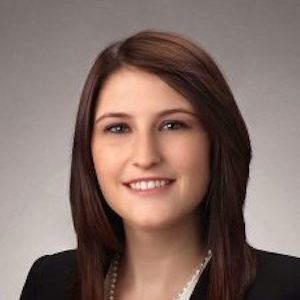 In a recent series of cases, the Court of Appeals for the Federal Circuit (CAFC) evaluated whether examples in a patent specification will support infringement of alternative embodiments. Two recent cases, The Medicines Co. v. Mylan, Inc and Skedco, Inc. v. Strategic Operations, Inc., illustrate that the patentee’s specification is key to determining whether an alleged infringer has practiced an alternative embodiment or a non-infringing invention. Both cases supply practice tools for improving the breadth of a specification. A patent practitioner can use these tools to improve the odds that a broad claim will pass muster against infringers.
In a recent series of cases, the Court of Appeals for the Federal Circuit (CAFC) evaluated whether examples in a patent specification will support infringement of alternative embodiments. Two recent cases, The Medicines Co. v. Mylan, Inc and Skedco, Inc. v. Strategic Operations, Inc., illustrate that the patentee’s specification is key to determining whether an alleged infringer has practiced an alternative embodiment or a non-infringing invention. Both cases supply practice tools for improving the breadth of a specification. A patent practitioner can use these tools to improve the odds that a broad claim will pass muster against infringers.
Showing support for broad claims in the specification implicates the Written Description requirement. Under the Written Description requirement, USPTO rules specify that the claims must find adequate support in the specification through “full, clear, concise, and exact terms as to enable any person skilled in the art” to practice the invention. Thus, each element of a patentee’s claim must have individual support in the specification. A competitor can attempt to avoid infringement by omitting or changing at least one element to move outside the bounds of a claim. Notwithstanding this requirement, some alternative implementations may be deemed “equivalent” if they serve the same function, cause the same result, or otherwise do not provide a substantially different role from the claimed element.
A patent practitioner can leverage the CAFC’s interpretation of these two doctrines to increase the value of a patent. The CAFC has clearly indicated that broad or predominantly functional claims, supported with permissive yet structurally definite examples in the specification, can successfully capture a wide variety of infringers.
To support a broad set of embodiments, the specification should provide a group of non-limiting examples while referring to other possible variations. For example, the description of a claim element can begin in broad (and sometimes primarily functional) terms. The subsequent discussion can offer several implementations, described as “example embodiments,” to support the initially described functions. As shown in Skedco, a competitor that practices one of the specific examples will infringe the broadly-phrased claim language. So long as the examples are non-limiting, and consistent with the broader description, other embodiments will also be covered so long as they are consistent with the various examples. However, the initially broad description of such terms must be supported with enough structural details to avoid “means plus function” interpretation of the claims. For instance, a broad term such as “fastener” or “display” can avoid a means plus function interpretation of the claims.
By contrast, words which do not correspond to a broad classification of contemplated structures would implicate “means plus function” interpretation instead of expanding the claims. This technique is a powerful tool for covering embodiments which apply different technology or future improvements, yet incorporate the inventive features of a claim. The Skedco court, for example, found that a controller claimed as “connected to” a valve could include intervening handles, mechanical converters, etc., between an infringer’s controller and valve. Although the specification did not specifically include this embodiment, the CAFC deemed it to be consistent with the other examples, without implicating “means plus function.”
Although examples in the specification can broaden a claim, they can have the opposite effect when drafted in limiting terms. In Medicines, the CAFC interpreted references to the “invention” and narrowly-drafted examples in the specification as limiting the scope of the claim. Medicines thus provides a point of comparison to Skedco. For example, the specification at issue in Medicines defined “the invention” as including the development of a “compounding process” for formulating “batches” of a claimed drug. The CAFC found that the specification’s use of the words “the invention” in combination with a limited example caused the sole example of a “compounding process” to be read into the claim. The CAFC then went even further in limiting the patentee’s claim by construing the “compounding process” to include only an “efficient mixing” of components. Specifically, the court pointed to the Specification’s description of the “compounding process” as including “all” the examples set forth therein, followed by just one example for the process, “efficient mixing.” Thus, an example will not be construed as an example when alternatives or broader concepts do not appear in the Specification to further define the bounds of a claim term. As a result, although neither the “compounding process” nor “efficient mixing” appeared in the claims, the claims were limited to these practices due to the limiting nature of the specification.
The specifications at issue in Skedco and Medicines took different approaches to the phrasing of example components, and thus led to different results against infringers. The CAFC in Skedco used several example embodiments in the specification to find infringement by a competitor who practiced the invention differently, yet consistent with the available examples. In contrast, the CAFC in Medicines found no infringement by a competitor who practiced a similar process due to a lack of examples and permissive language in the Specification. Through these cases, the CAFC provides two practices for broadening the possible construction of a patent’s claims. First, where possible, practitioners should use broad language in the claims and include numerous supporting examples for these terms in the Specification, so long as a sufficient structure still corresponds to the broad language. Second, practitioners should avoid using limiting terms (e.g., “includes all”) and explicitly referring to “the invention” when providing said supporting examples. By employing these techniques, a patentee may be able to stop a larger number of infringers if the various examples are drafted as mere examples of a broader functional relationship between individual elements. Although claims can be drafted broadly to capture many infringers, such claims should be supported with a similarly broad specification including multiple examples.

![[IPWatchdog Logo]](https://ipwatchdog.com/wp-content/themes/IPWatchdog%20-%202023/assets/images/temp/logo-small@2x.png)


![[Advertisement]](https://ipwatchdog.com/wp-content/uploads/2024/04/Patent-Litigation-Masters-2024-sidebar-early-bird-ends-Apr-21-last-chance-700x500-1.jpg)

![[Advertisement]](https://ipwatchdog.com/wp-content/uploads/2021/12/WEBINAR-336-x-280-px.png)
![[Advertisement]](https://ipwatchdog.com/wp-content/uploads/2021/12/2021-Patent-Practice-on-Demand-recorded-Feb-2021-336-x-280.jpg)
![[Advertisement]](https://ipwatchdog.com/wp-content/uploads/2021/12/Ad-4-The-Invent-Patent-System™.png)







Join the Discussion
3 comments so far.
2151rf3f32f
July 25, 2017 10:23 amSkedco is in the mechanical arts, and more specifically “educational games,” which would be considered a predictable art….
Anon
July 22, 2017 11:42 am“predictiable” arts – that term needs to be moth-balled.
Not taking due care in being precise enough should not be awarded mulligans.
Joachim Martillo
July 22, 2017 01:42 amThe two examples belong to the unpredictable arts. I wonder whether the Courts would have reaching similar conclusions if the technologies had belonged to the predictable arts.